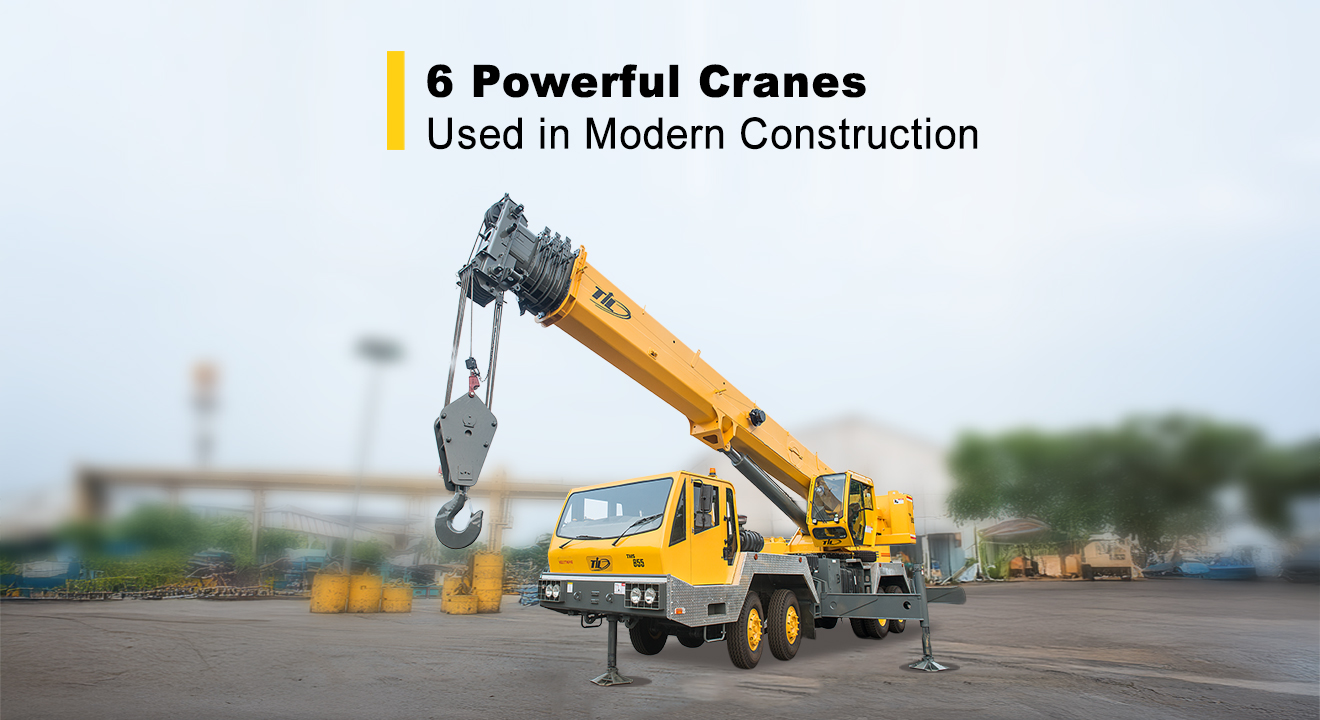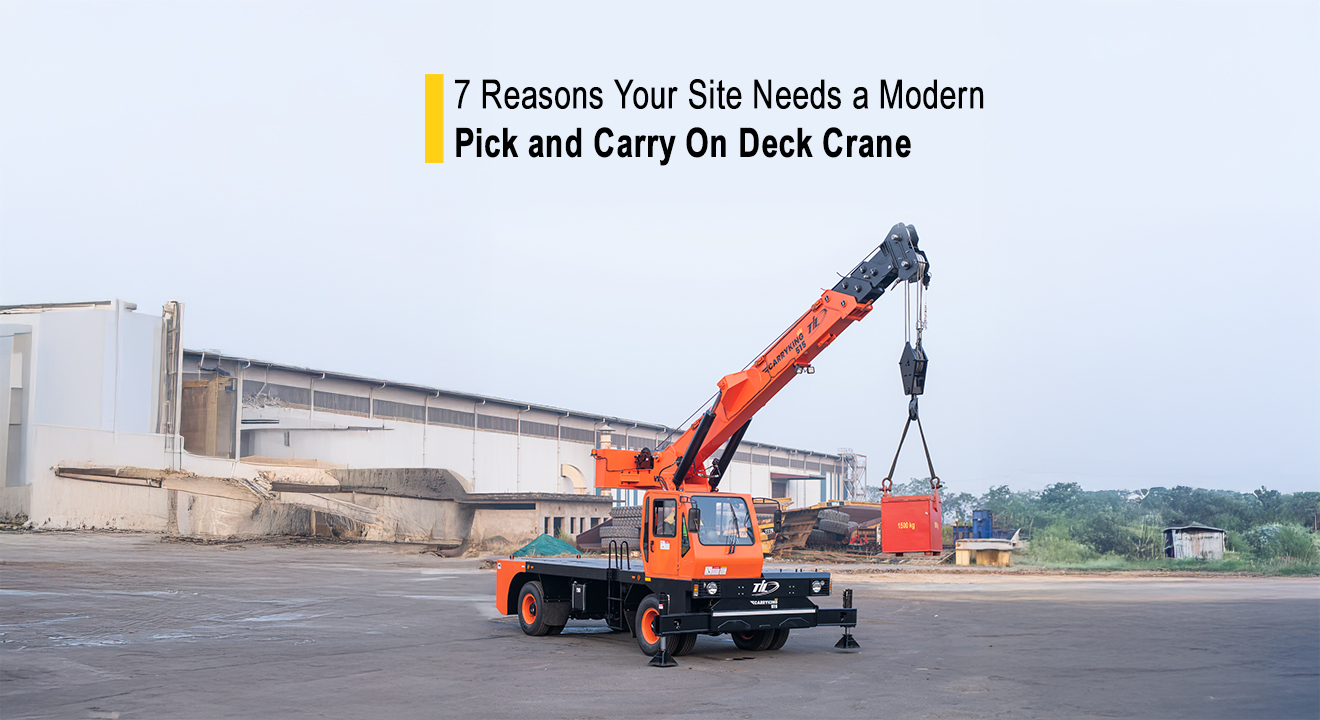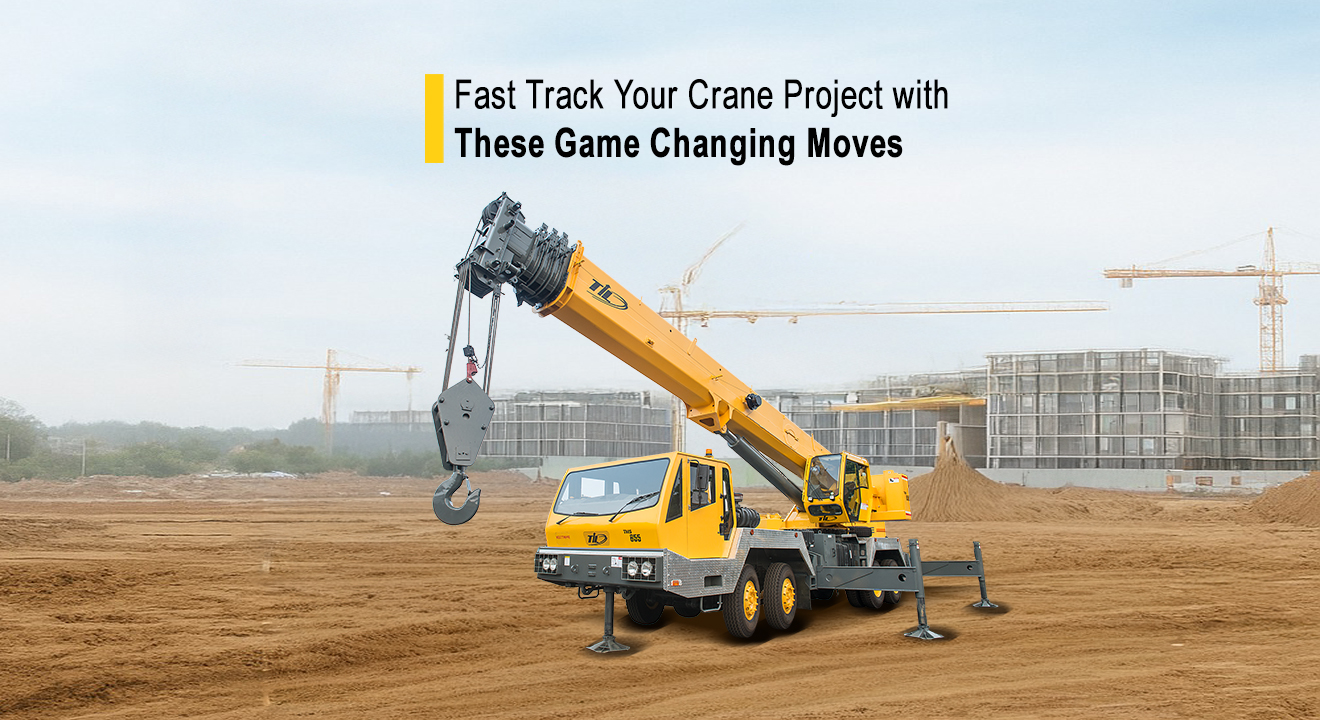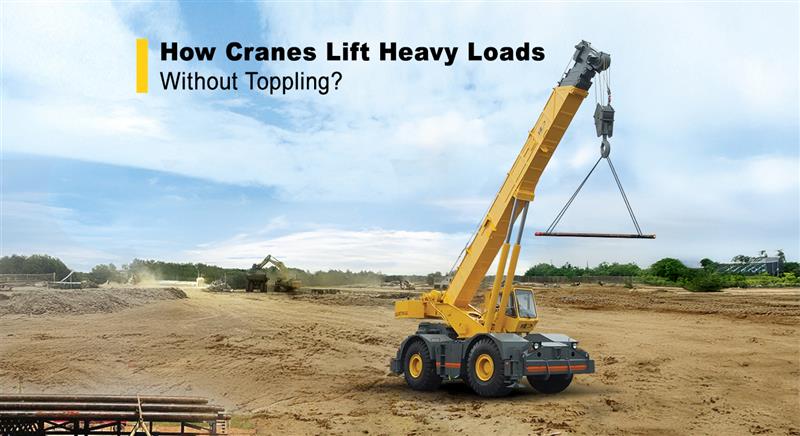
Let’s be real—on any serious construction site, cranes aren’t treated as just any other machine; rather, they are the backbone. From hoisting steel to moving across rough terrain with heavy loads, cranes literally do all the heavy lifting.
Today, with cities expanding and infrastructure budgets booming, the demand for cranes is only growing bigger. So, how big is the crane industry? The Indian crane market size reached USD 3.6 billion in 2024 and is expected to reach USD 5.4 billion by 2033, according to the International Market Analysis and Research Centre (IMARC) Group.
Smarter designs, advanced tech and safety features are all turning cranes into giant, powerful industry players. So, if you are involved in building or operating any substantial infrastructure project, from urban construction to mineral and coal mining, you need a crane.
Now, the various types of cranes used in construction sites are broken down into two categories: mobile and static. Based on your requirement, you need to make a choice.
Let’s get to know the 6 mechanical heavy lifters that have your back in a modern construction project.
Table of Contents
1. Rough Terrain Cranes
Quite often, it is difficult to find a job site which is flat or level, and that is exactly where Rough Terrain (RT) cranes come into action. These off-road cranes are built for difficult ground conditions, such as mud, gravel, steep grades, and slopes. With oversized low-pressure tires and four-wheel drive, they can handle landscapes that are challenging to traverse.
But, what if the job site has a tight space? Most RT cranes, such as the TIL RT 880, are designed to fit into tighter spaces. Moreover, the telescopic boom gives them an extended reach and lifting power. When compared to a crawler crane with similar functionality, Rough Terrain cranes are smaller and lighter. You will find that these mobile cranes are used at construction sites, mining operations, and even in oil refineries.
2. Truck Cranes
Need lifting power on the move? That’s where truck cranes come in. These mobile machines are mounted on standard trucks, making them fast, flexible, and ready to roll onto job sites. You do not need any special transport, as truck cranes can safely travel on public roads. So, if you are a construction company and need to handle multiple projects at the same time, these cranes are ideal.
Perfect for urban projects and highway repairs, truck cranes offer solid lifting capacity with quick setup, reducing the relative cost. The truck cranes are also called boom trucks or truck-mounted cranes (TMC). The telescopic booms add extra reach and can lift around 80 tons. For example, the TIL Truck 880M cranes come with a hydraulically operated outrigger system to ensure additional stability. However, despite their high mobility factor, they are not equipped to work on freshly dug and marshy ground..
3. All-Terrain Cranes
Can you picture a crane that can roll down the highway at a decent speed? All-terrain cranes can climb up slopes, move through dirt, and cross uneven ground without any extra effort. An All-Terrain (AT) crane is like an all-rounder of the crane world. It is strong, fast, and to ensure stability, it comes with outriggers and crane counterweights.
These machines are a perfect blend of both worlds, combining the mobility of a truck crane and the toughness of an off-road rig. So, whether it is a remote area or a massive urban infrastructure project, you can easily move AT cranes from one site to another. They also cut down the need for extra transport gear, which means more savings for owners and hirers. When time matters and conditions are unpredictable, this kind of crane has your back.
4. Pick and Carry Crane
When every minute and rupee counts on a job site, pick and carry cranes offer the kind of smart, adaptable performance that keeps projects on track and teams ahead of schedule. These mobile lifting machines are engineered for both lifting and transporting heavy loads. Unlike static cranes, it helps to eliminate the need for separate hauling equipment, which saves time, space, and effort.
The pick and carry cranes are perfect for high-pressure environments, like urban construction zones. With lifting capacities typically ranging from 10 to 25 tonnes, they can handle steel beams, precast panels, and other heavy materials. Built with safety features, these cranes come equipped with load moment indicators and electronic stability control, giving operators the upper hand while tackling demanding lifts.
5. Crawler Cranes
When the lifting gets serious, crawler cranes step in. These beasts travel on tracks instead of wheels, giving them superior stability, especially on soft or uneven surfaces. These cranes are mounted on large, heavy vehicles, and they have treads which prevent them from getting stuck in marshy ground. They also have a powerful hydraulic system and a heavy lifting arm.
Crawler cranes are used in projects such as bridge construction, wind turbine installation, and other mega-projects (sometimes literally moving mountains). The drawback? These machines are not easy to move between sites, as they are huge. They are heavy and often need to be disassembled for transport. However, for long-term jobs, they are highly applicable.
6. Tower Cranes
If you move around the city, there is a high chance that you will notice a tower crane standing tall against the skyline. They are hard to miss, but mostly you might overlook them. These machines carry the weight of entire buildings, such as lifting steel, concrete, and glass, hundreds of feet above the ground. The impressive aspect of this high-rise lifting machine is its lifting accuracy.
A tower crane is a static crane that is made of a tower (also known as the mast), the arm extending out from the mast and the jib (a 360° slew around the mast). Along the length of the jib, there is a trolley, which helps the block hook to reach the correct location. Its stability ensures safety for those working with and around the crane.
The vertical construction crane is rooted, sometimes in the ground, and sometimes in the very structures they are helping to build. Thus, in the middle of tight, busy city streets where space is cramped, the jib of the tower crane can easily rotate. However, the only limitation of a tower crane is its range of motion.
Choosing the Right Crane For Your Project
Picking a crane isn’t just about lifting stuff—it’s about lifting the right way. Every job site comes with its own challenges, and every crane has its strengths, which also determine the crane prices. You can go with the Rough terrain if the job site is challenging. Building a skyscraper? You need a tower crane or a static crane. Do you have a tight deadline and remote access? All-terrain crane might be the only option. If you have a long-term project where the crane has to be at multiple locations, then the best crane is the pick-and-carry crane.
The key is understanding what advantages and disadvantages each type of crane brings to your table. You can match your tools to your goals. As the construction world continues to evolve, having the right crane has become a necessity. And, if you have made it this far, you are already ahead of the curve.
If you are looking for more information on mobile cranes, keep following our blogs page . Explore how Rough Terrain cranes power up business efficiency.
FAQs
1. What factors affect crane price in construction projects?
Lifting capacity, crane type, brand, location, and operation durations are some of the factors which influence crane price. Additional expenses could include setup, delivery, and maintenance costs.
2. Is it less expensive to purchase or rent a crane for construction?
Short-term initiatives are typically more cost-effective when rented. Buying may be worth it for frequent use, depending on the model and specs.
3. How to choose the right crane for a construction site?
The jobsite layout, ground conditions, and the height and weight of the loads will all influence your decision. The cost of the crane and other budgeting factors influence whether you require a static crane or a mobile crane.
4. What is the difference between a truck-mounted crane and a telescopic crane?
A truck-mounted crane is constructed on a commercial vehicle chassis; it is portable and quick to set up. Whereas, a telescopic crane refers to the boom type, which can be extended using hydraulic cylinders. While not all telescopic cranes are truck-mounted, some truck-mounted cranes use telescopic booms, allowing the two to overlap.




